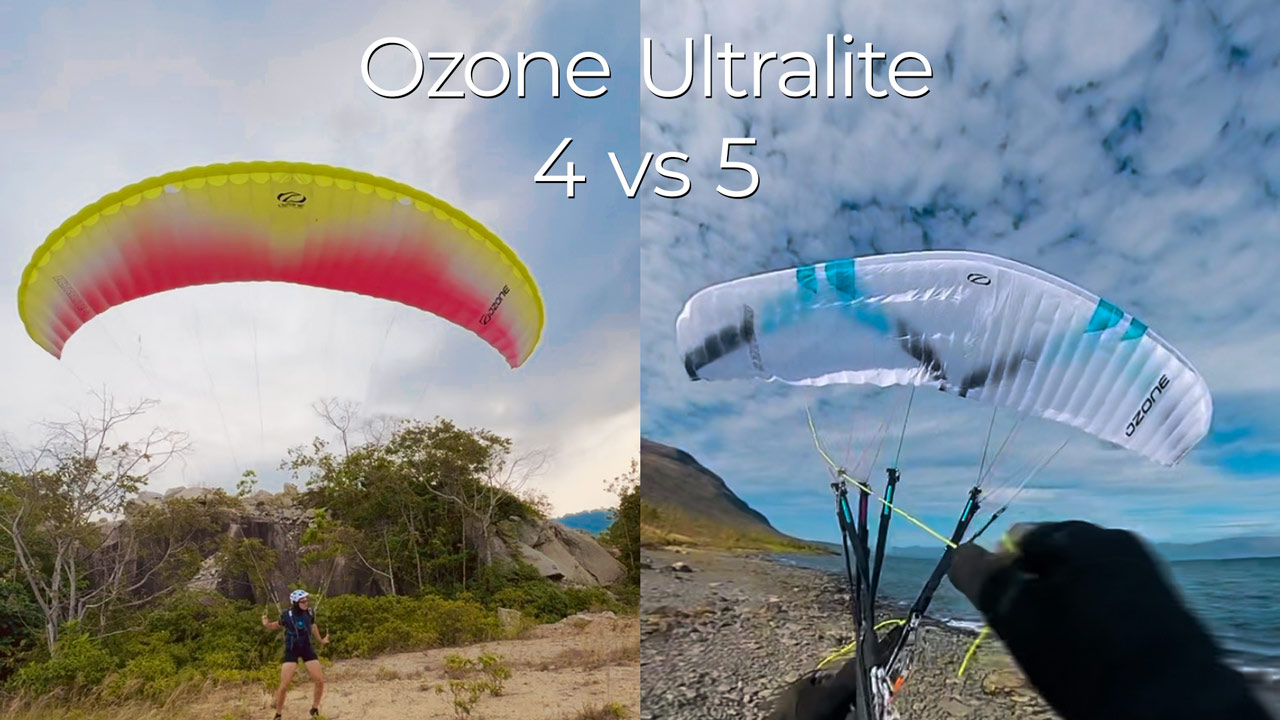- review: Arc’Teryx Gamma lightweight jacket – what OutdoorGearLab doesn’t tell you - October 22, 2025
- Has AI killed it all? The future of this website & my projects - October 12, 2025
- Review: Lono Wild – Best budget barefoot hiking shoes around? - April 30, 2025
The recently launched Ozone Ultralite 5 is thought to be the best lightweight paraglider around – but is it actually such an improvement?
Ozone claims a massive 0.8 glide ratio and 7kmph speed increase over the previous generation Ultralite 4. Is it really all that its been chalked up to be?
Disclaimer: At time of review I am an intermediate pilot with ~50 flight hours and ~100 flights, so take my opinion with two grains of sand..
I will compare the Ozone Ultralite 5 in size 21, vs Ozone Ultralite 4 in size 25, vs Ozone Buzz Z6 in size ML (23m2) as those are the wings I have most experience with.
Table of Contents
Ozone Ultralite 5 vs Ultralite 4
Well, it’s not a 1:1 comparison because the Ultralite 4 I have in size 25, and the Ultralite 5 in 21, the former with lightweight risers, the latter with standard.
But, at ~83kg naked, ~90-95kg all-up weight, the difference in size 21 and 25 is quite significant.
The Ultralite 5 in 21 really takes a lot more to launch – way more running and it just doesn’t pick me up in the same way as the 25 does. It’s much more responsive in the air – dives a lot more in turns, more responsible to body roll, and feels like a B-wing. Turbulence, air chunks, and everything feels much more direct in the UL5 21.
The UL4 in 21 feels more akin to a school wing – dampened response to turbulence and air chunks, doesn’t dive nearly as much in turns, and takes a lot more input to make those turns in the first place. A very long brake travel when it comes to deflating the wing/stalling on both gliders, with more on the UL4 21.
Unfortunately as they are different sizes and it’s not a 1:1 comparison, but the glide ratio on my UL4 25 is significantly better than the UL5 21. I sink and lose altitude quite quick on the UL5 21, causing quite a few spontaneous landings in comparison.
Launching the Ultralites
Both wings are very, very easy to inflate. Thanks to the featherweight fabric and design, the general up-roll is easy, quick, and predictable and are very hesitant to overshoot Ground handling is quite easy as they respond quickly to brake inputs, while A-C steering is a breeze.
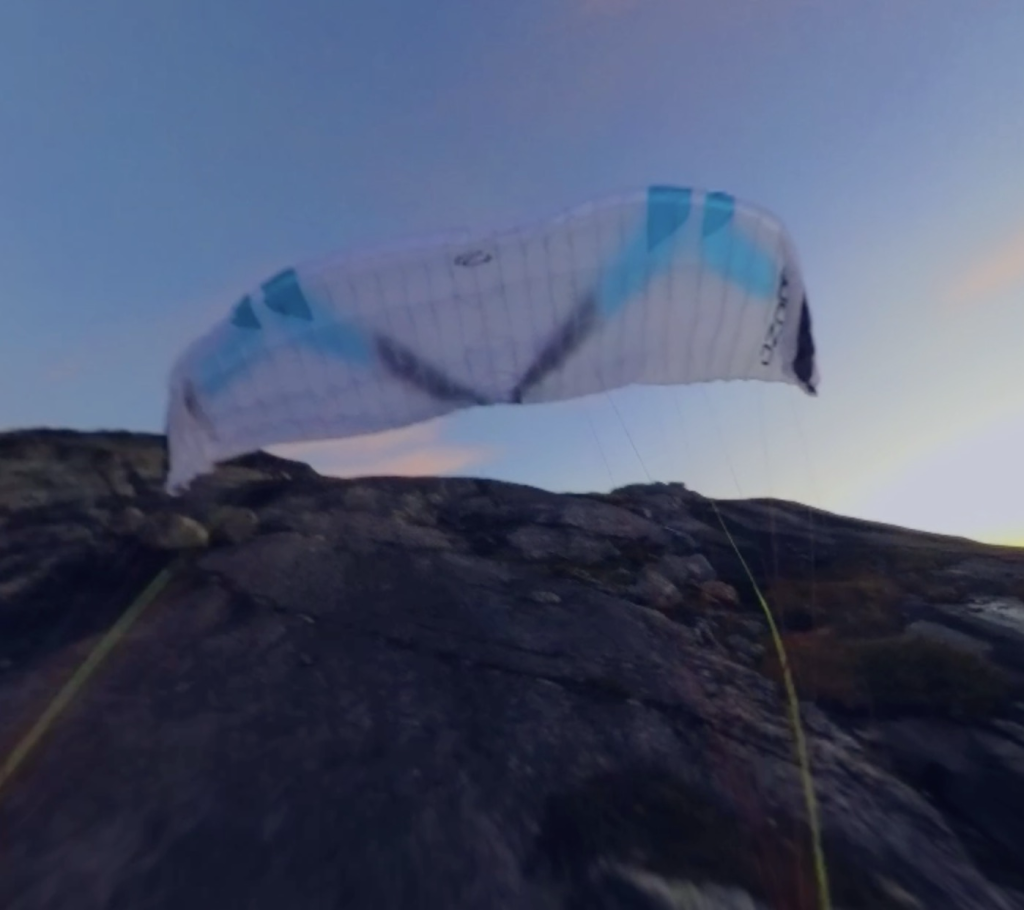

Both are easier to inflate and handle than my Ozone Buzz Z6, but that’s no surprise given they weigh less than half of the Buzz, and inflate with the smallest gusts.
Ultralite performance
For both thermalling and hike and fly I’ve had nice success. I found the more responsive nature of the UL5 21 made it much easier to find and turn into a thermal. The UL4 had so much dampened feedback that I would sometimes barely notice the lift or signals if not for my vario.
The UL5 in 21 has a LOT more roll and dip in turns when either weight shifting or using brakes. The Buzz Z6 and Ultralite 4, 25 have comparatively flat turns in my feelings. On landing I have to do a wrap or really pull deep below my butt in order to stop the wing from overshooting and falling in front of me.
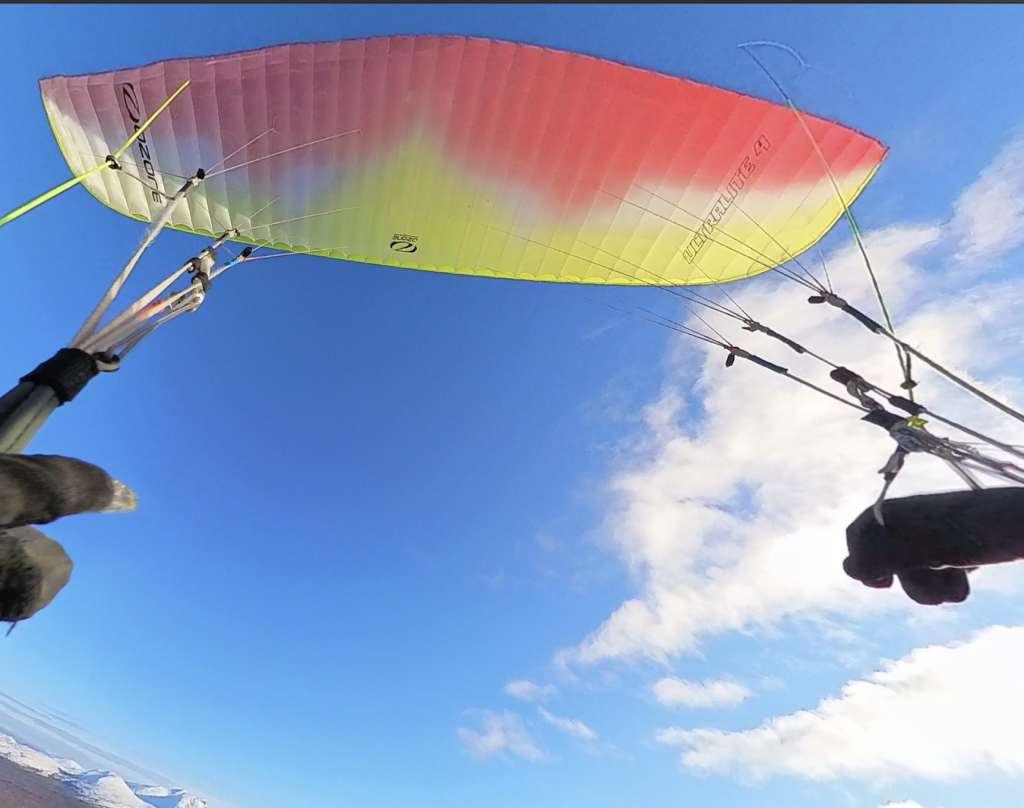

On turns, a pull to carabiner level creates a 5 degree roll on the UL4, 25, and a 15 degree roll on the UL5
The Buzz Z6 feels right in between the two, but it also makes sense given my Buzz is 23m2.
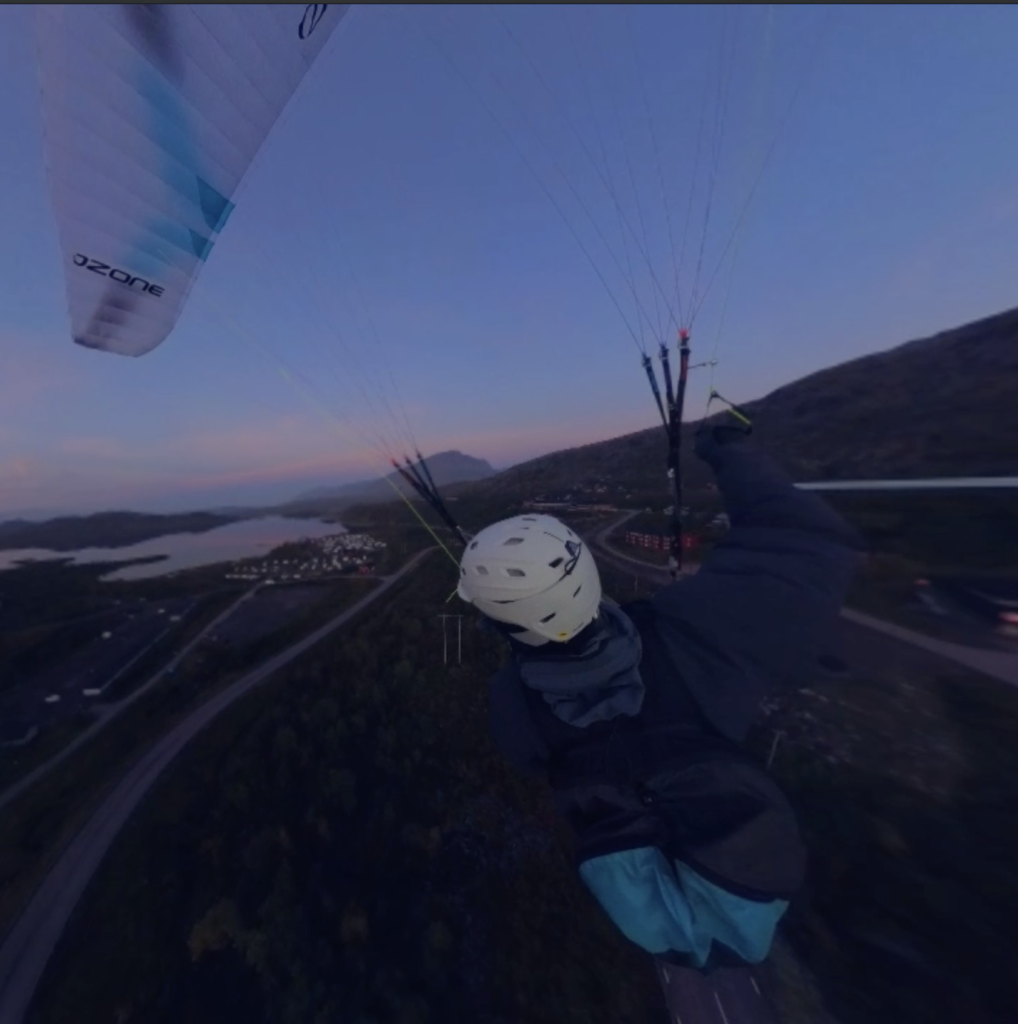

Standard vs lightweight risers
For ~120 grams less you can ‘upgrade’ to the lightweight Dyneema risers. While this weight savings is certainly nice (and almost 5% of the total weight!), I have found them to be a bit… irritating.
In my Ultralite 4 I have the lightweight Dyneema risers, which have been complicated to say the least. I don’t know if they have changed in the UL5, but my first complaint is with the brakes – the velcro on them is just crap and the brakes fall off and tangle in the lines almost every single time when launching, packing, and everywhere in between. It seriously gets on my nerves after a while.
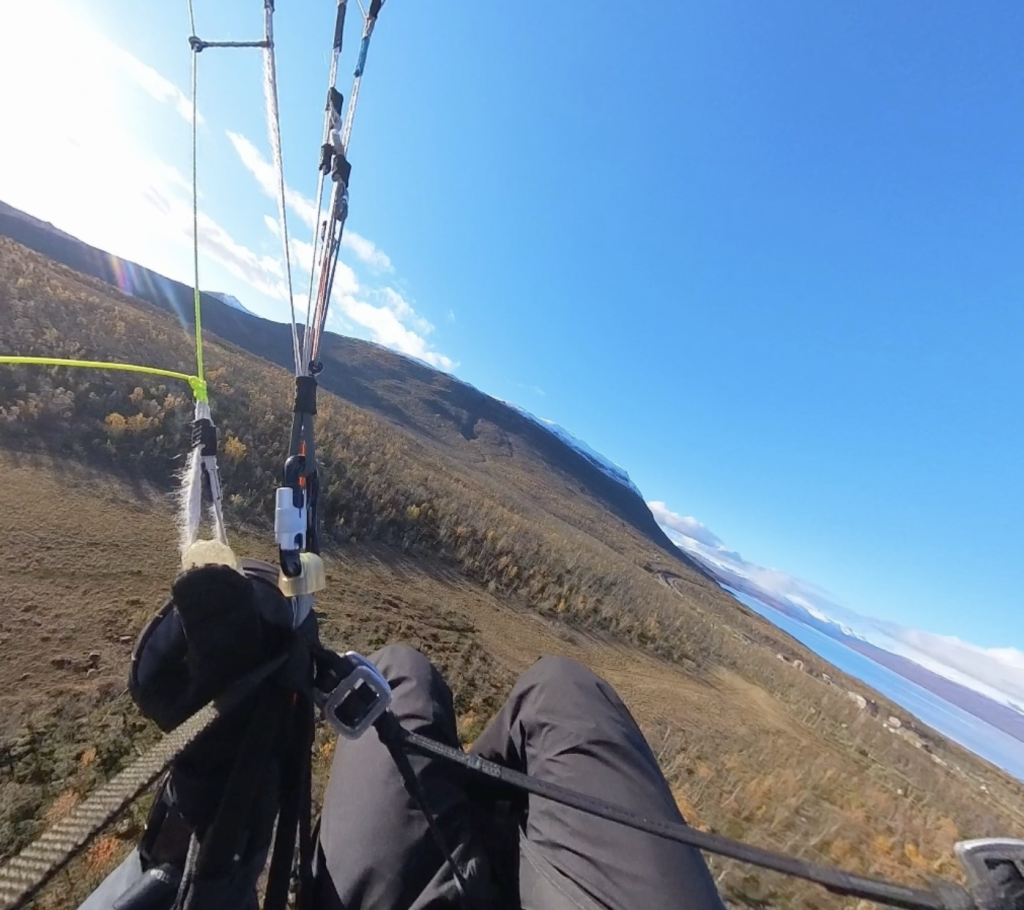

The Dyneema risers also require triple and quadruple checking for twists or anything in your pre-flight. It’s much harder to spot and you really need to be diligent. Also, the velcro on the brakes constantly catches and snags the Dyneema on the risers, making them fuzzy, ugly, and potentially degrading them quicker.
It’s just more of a hassle overall and I much prefer the 120g heavier standard risers – easier to manage, tidier, and the brakes are affixed with a sturdy button instead of loose and abrasive velcro.
Improvements from Ultralite 4 to Ultralite 5
One of the biggest improvements in my opinion is that the Ultralite 5 has split-A risers which makes inflating and pulling big ears much easier! The Ultralite 4 has no such thing, and occasionally on reverse launch the wing will horseshoe as the outer As have a bit more tension than the inners.
I much prefer to have a split-A riser design due to the more predicable launch behaviour, and being easier to pull big ears. Too, the Ultralite 5 has butt-holes which lets small debris fall out from the outer trailing edge, which the Ultralite 4 does not.
Additionally, the Ultralite 5 has colour-coded lines between the A, B, and C cascades – so it’s easier to identify and clear any knots or tangles.
The Ultralite 5 uses Dominco 10D all throughout, which the UL4 uses 20/10D on the top and 27D on the bottom. Now, I don’t know about characteristics from these materials, but the thicker blend which the Ultralite 4 has maybe more durable. The cloth on the Ultralite 5 is also quite slippery!
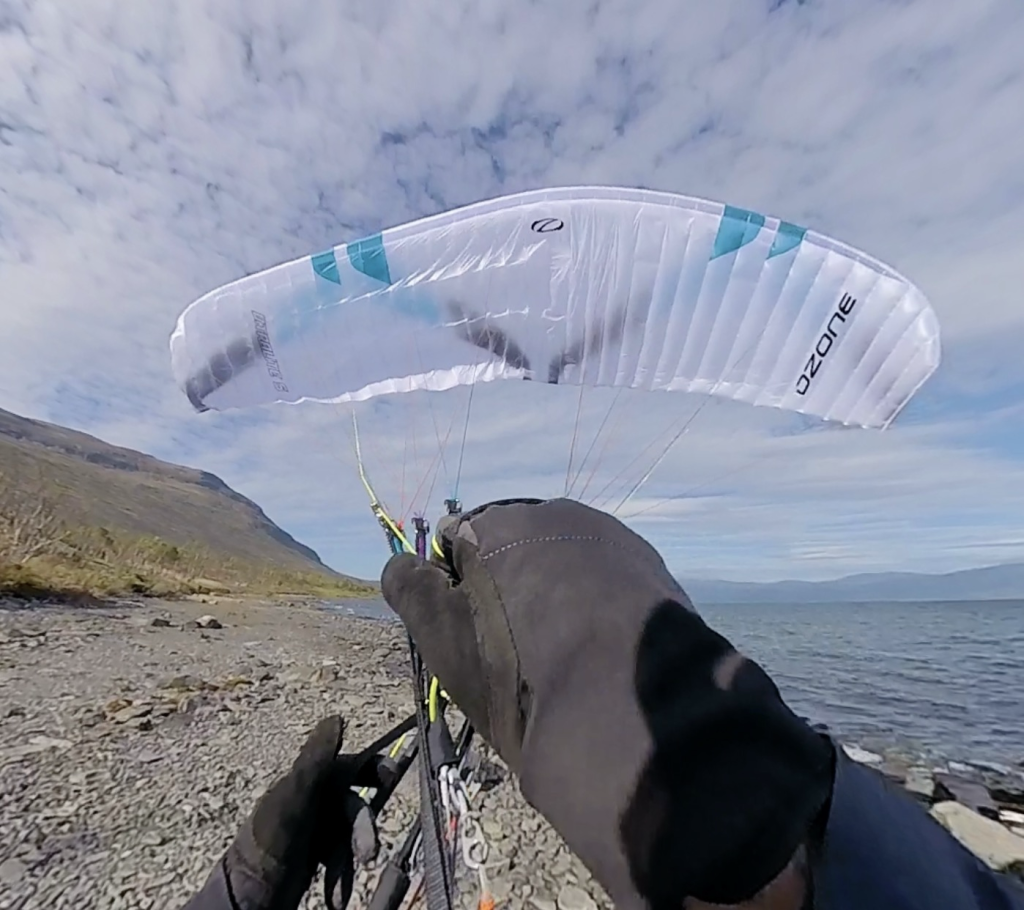

I do actually prefer the brake line rings on the UL4 over the the brake pulleys on the UL5 since they don’t squeak!
Ozone does claim 0.8 glide and 7kmph improvement over the Ultralite 4, which, I have no way to confirm, especially since my UL5 is a different size. But, this alone is a good reason to opt for the UL5 since improved performance is always nice.
Ultralite paraglider packing size
They pack up really small! I mean, not single-skin small, but less than half the volume of my Buzz Z6! In my Easiness 3 (63L) I was able to comfortably fit my entire cold-weather vol-biv setup – almost ridiculous how small and light these can compress down to. I would say they occupy about 30L concertinaed, and around 20L if really packed down.
Collapses
I haven’t really had much for collapses on either wing – some small flutters and such, but nothing more than a 5% collapse. In this video the pilot pulls asym and frontals and demonstrates the recovery characteristic, which, are very good!
If ground handling is any indication though, they re-inflate super easily from a collapse, probably helped because of the hole-punch on the leading edge cell dividers which allow air to pass through even easier! The inside of the UL5 looks like brilliant origami.
Ultralight paraglider durability.
Well, they’re ultralights – what do you expect?
My UL4 I purchased second-hand with already many patches on it. Just from a season of flying and launching in mountain (not-grass) habitat and a couple of deflations onto bushes, I’ve made a half-dozen or more patches on my UL4…
Too, my very first flight on the UL5 had a line break! I guess either a friction knot or rubbing against rock or some sticks – I was pretty bummed to say the least. The nature of unsheathed lines I guess.
Compared to the standard weight 20/30D cloth on the Buzz Z6 (which I brutally abused on rocky sandy Portuguese cliffs), they’re very weak.
The Dominico 10D on the UL5 is practically translucent, and you can just wonder how on earth these things fly! Magic bedsheet indeed..
So, don’t get an Ultralite paraglider if you are expecting to fly anywhere near sand, rough rocks, or nasty terrain in general – these gliders are meant to be babied in order to have a healthy lifespan.
Overall
I really like the wings as they pack up absolutely small in my bag (20-30L), weigh so little, inflate so easily, and perform quite well!
With that being said, the 21 UL5 is just too small for my weight and I wish I went for the 23 instead. On the other hand, the 25 in UL4 is too large and dampened – maybe nice for a complete beginner and smoother rides, but for me I’m missing some feedback and responsiveness from the wing.
I think as far as ultralight double-surface paragliders, they’re as good as they get! There are some other options like the Advance Pi 3, Gin Yeti 6, Niviuk Kode P, etc – which I have no opinion on since I’ve never tested them, but I’m quite certain than Ozones Ultralite lineup is among the best out there.
Also, the Ultralite 5 in white just looks awesome!
The improved ease of use of color-coded lines, split-A risers, and standard risers make me much prefer using my Ultralite 5, and I’d suggest to get the UL5 if money is no object and you want the best of the best!
Thoughts and opinions? Drop them down below to contribute to the discussion. Thanks very much for reading and peace!

